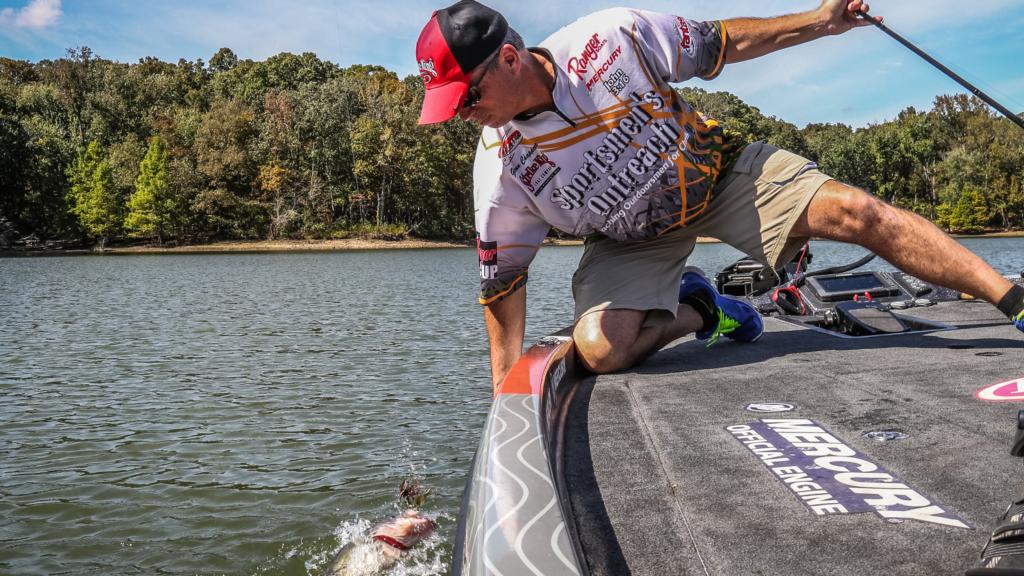Creek Fishing in the Fall
Find the shad first to locate transitioning bass

Conventional wisdom has it that in Tennessee River lakes shad migrate up creeks, and bass follow them in the fall. But which creeks? If you’ve fished a body of water for several years, you probably already know the answer. If you’re fishing an unfamiliar lake in preparation for an upcoming tournament, however, it’s sometimes hard to know where to start looking. There are a few ground rules to follow that will help you narrow down the search.
For instance, depending on how early or late in the fall it is, and what the general weather trends have been lately, you might want to start fishing closer to the mouth of a creek and work your way up it. Conversely, if it’s later in the season and the water has cooled off substantially, you might want to begin toward the back end of a creek and work out.
Before then, you should have done your homework with lake maps and found places where a creek makes a big turn where there might be a rocky area or semi-bluffs on the outside bend side. Such features are especially good focal points when smallmouths are present in substantial numbers. Also, it might be advisable to start looking in smaller creeks where the fish are compressed a bit more and where there’s not so much territory for you to cover, rather than beginning your search in a much bigger creek arm where fish might be anywhere.
There are clues to look for: the presence of shad flipping on the surface or jumping out of the water, lots of gulls and herons, and striking bass. The best clue, of course, is to catch one or two fish on a specific type of structure or cover, and then look for duplicate situations.
Depending on the circumstances and water conditions, I might be fishing a football jig or Strike King Structure Jig in black and blue or green pumpkin, or a shad- or crawfish-colored XD crankbait. For cranking, I like a 6 1/2-foot, medium-action rod with 10-pound-test Seaguar fluorocarbon, and I use a 7-foot, medium-heavy-action rod with 12- or 15-pound-test Seaguar fluorocarbon for jigs.
A lot of fronts tend to pass through in the fall, and they change the position of fish in creeks. The water temperature goes up or down; winds that accompany the fronts might push baitfish to one side or the other in a creek; bass might reposition based on whether it’s sunny or cloudy. There are a lot of factors to consider, and reading the water and conditions becomes very important.
One thing that doesn’t change from day to day, though, is that the fish are following the bait. If you’re around bait, you’ll be around bass.